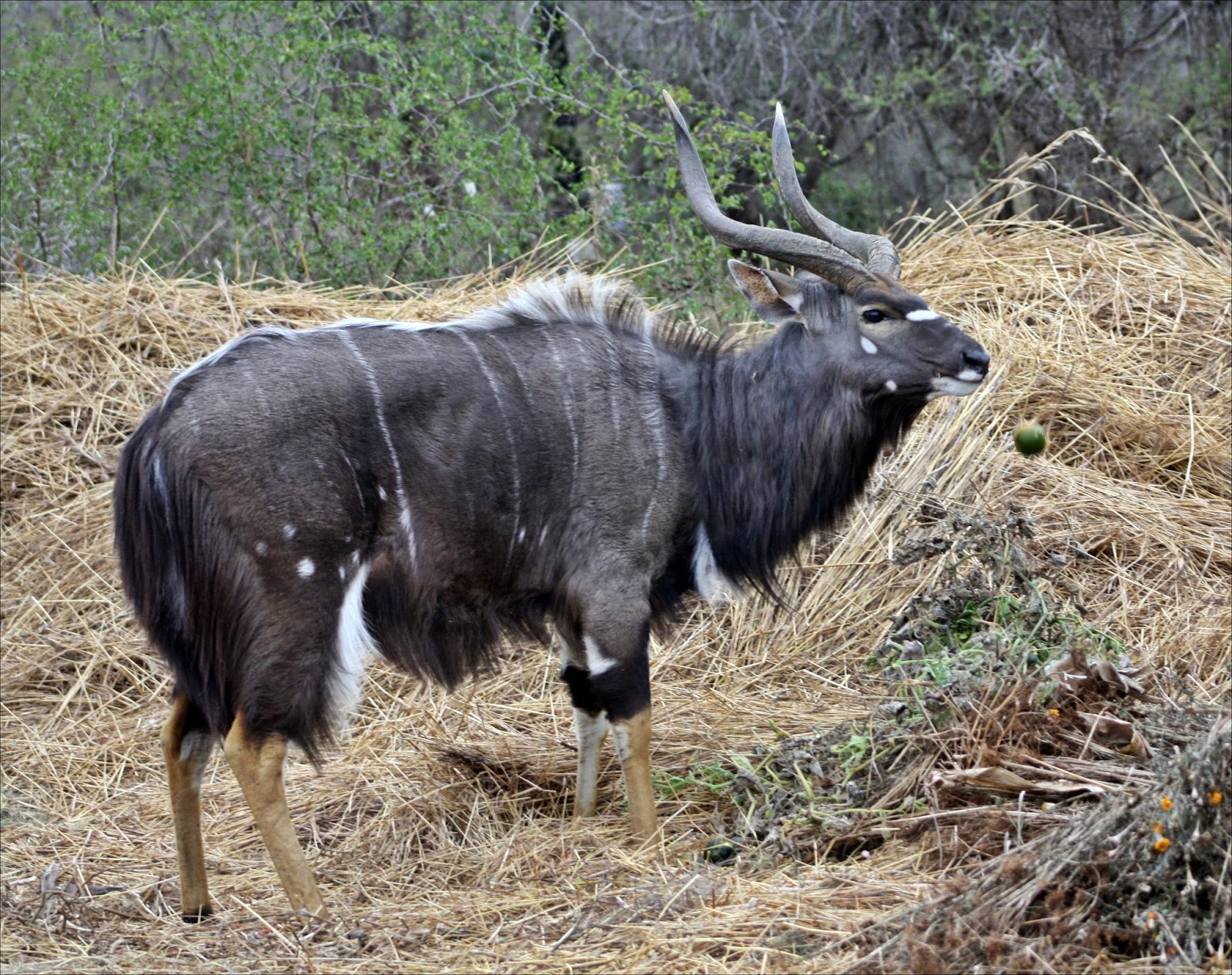Co-existing
Gardening within the area I do (on a nature reserve in the Lowveld
region of South Africa) is like full scale war. You are dealing with aerial
attacks, evasive tactics, invasive tactics, infiltration, intelligence,
undercover agents, camouflage and Gorilla tactics.
First I have to explain that I hate killing anything, so I am
probably the worst ever General in command of an “army”. I look for
peaceful solutions, while being bombed and bullied. Besides no matter how I try
and look at this, I am the aggressor and the invader. This is their world and I
am claiming a space for myself within their territory and obviously this is not
a peaceful surrender.
This time of the year is also normally very dry with very little
green to eat, the temptations is simply bigger that the risks, especially with
a “hippy peace freak” type commander in charge of protecting the juicy green
things.
Escape
Artist!
The baboons are using the grab and run/ Gorilla tactics very
effectively, they simply jump the fence, grabs a cauliflower and whatever else
close by and retrieve back over the fence. They do not touch the fence, these
“special forces” are not afraid of anything.
Our 1st line of defence is an electric fence right around the
garden, (this obviously does not stop a hungry baboon), but it does work well
to keep out the elephants, buck and lots of other critters and creatures,
like porcupines and other “undercover agents” I am sure I am not even
aware of yet.
Old implements in front of
the gate to keep the Elephants away
You also have to put old implement or anything big and very heavy
in front of the gate, I have explained this somewhere before, but for the sake
of clarity – there is an electric fence around the garden, but the gate is the
weak point, if an elephant can get to the gate, it takes one good shake (from
the elephants) and a small shock (to the elephant) and the gate is gone!
This normally happens in the evenings, a night invasion. Our night
guard, Jeremiah, shoots them with a Paint ball gun, this does scare them off,
for a while at least and often you see elephants with pink or yellow spots, to
the big embarrassment of the rangers, who has to explain this to the
guests.
The porcupines are the infiltrators, looking for weak spots (rusty
bits etc.) at the bottom of the fence and simply chew or dig their way
through. This also allows access for the rest of the army!
This means the 2nd line of defence is to check the first line
of defence (fence) daily.
Still it is not the end, now we come to the aerial attackers, in
this case flying things of all sorts of shapes, sizes and appetites. These are
the grasshoppers, the bird, the vine borers and and and....but I must admit
they are not all out to do harm, some are there to help. That is why I can
never use Chemical poisons, because you also kill the good guys, like the bees
and butterflies, amongst others. Besides who are we to say what is good and what
is bad, these creatures are just doing what little creates do, Invade gardens.
I think I am winning against the foot soldiers an Infantry
troops.... the snails and slugs and
other invaders. So far our 3rd
line of defence, (a row of Marigolds right around the garden, just inside the
fence) is very effective in keeping these out.
I am not quite sure where the Horn bills fit into
the whole story; they are more like a “travelling circus” than an invasion.
They are also friend and foe, they eat anything from insects to my lettuce.
They seem to favour one specific type of lettuce, so I am simply not planting
that lettuce any more.
Horn bills clowning around
Some of the peace proposals also seem to be working, like the
sunflowers to keep ant and Aphids happy (see previous article). I have also not
resorted to the chili a la garlic potion, because that actually kills them;
that will be my last line of defence.
I have also made some great friend of the animal
kind, the squirrels are super cheeky and not one bit scared of this softy. I
outsmarted him (them) though, I simply do not plant Sunflower or Peanuts
directly into the ground, I make seedling and plant those and then half these
seedlings are eaten by grasshoppers and friends, so you simply have to plant a
lot, otherwise the Ants and Aphids won’t be happy....
Nyala
snackings
There is also the old one eyed Nyala that comes around in the
afternoon and patiently waits for something green, his favourite is spinach and
we have tons of Spinach.
Within this whole peaceful approach there is the important matter
of actually producing food for humans, but then just looking at what we
harvested today I have come to the conclusion that the only real solution is
to plant ENOUGH, meaning enough for humans and animals alike, I do have
enough space after all.
Too
much to carry, our delivery to the kitchen today - 20 kg beetroot, 20 kg
onions, 10 kg leeks, 5 kg carrots, 5 kg salad tomatoes and more... it is
all 100 % organic! (the kg's are measured by bucket, so it might not be totally
correct)








.JPG)













.JPG)




.JPG)








.jpg)






